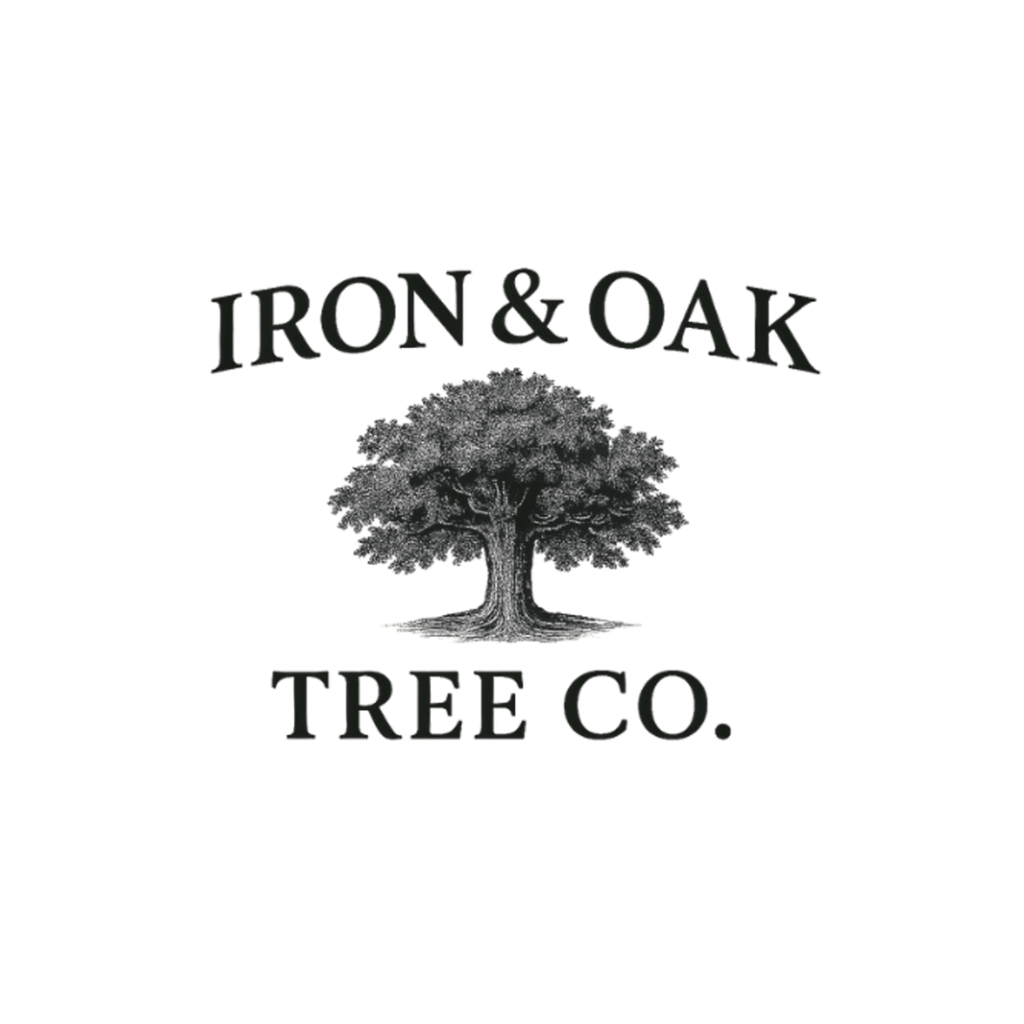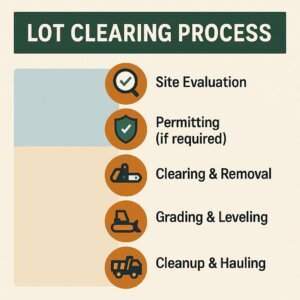So you've got a piece of land in Minnesota that needs some work. Maybe it's overgrown with brush, packed with trees you don't need, or just not quite ready for the project you have in mind. Before you can break ground on that dream home or landscape makeover, there's one crucial first step: lot clearing.
And no, it's not as simple as firing up a chainsaw and going to town. Done properly, lot clearing is part art, part science—and it sets the foundation (literally) for everything that comes after.
At Iron & Oak, we've helped countless Minnesota property owners clear their land the right way. Here's what you should know before you get started.
What Does Lot Clearing Actually Include?
Lot clearing means preparing raw or overgrown land for construction, landscaping, or simply better use. Depending on what your property needs, that might involve:
- Removing trees and grinding stumps down to ground level
- Clearing out thick brush and undergrowth
- Leveling uneven terrain through grading
- Hauling away debris (or turning it into something useful like mulch)
- Prepping the site for driveways, foundations, or utilities
Each project is different. Some lots just need a light touch, while others require heavy equipment and careful planning. Either way, the goal is the same: turn your land into a clean, safe, and workable space.
Why Minnesota Properties Often Need Professional Clearing
If you've spent any time in Minnesota, you know our landscape isn't exactly flat and barren. We've got dense forests, rolling hills, wetlands, and plenty of brush that loves to take over when left unchecked. That natural beauty? It can quickly become a headache when you're trying to build or landscape.
Here's why clearing matters:
Safety comes first. Dead trees, leaning trunks, and hidden stumps aren't just eyesores—they're hazards. Clearing removes those risks before anyone gets hurt or equipment gets damaged.
Access is everything. You can't dig a foundation or pour a driveway if excavators can't even get to the site. Clearing opens up the property so work can actually begin.
Drainage makes or breaks a build. Poor grading leads to standing water, erosion, and foundation problems down the line. Proper clearing includes shaping the land so water flows where it should.
Curb appeal and value. Whether you're building to sell or just want your property to look its best, a well-cleared lot is infinitely more attractive than an overgrown mess.
How the Process Actually Works
When we show up to clear a lot, we're not just winging it. There's a method to the madness, and it starts with understanding your land.
First, we walk the property and evaluate what we're dealing with. What's the tree density like? What's the soil condition? Are there any slopes or drainage concerns? This shapes our entire approach.
Next, we handle the paperwork. Depending on where you are in Minnesota and what you're clearing, you might need permits—especially if you're near wetlands or working with protected tree species. We'll either take care of that for you or point you in the right direction.
Then comes the actual clearing. Trees come down, stumps get ground out, and brush gets hauled away. We use professional-grade equipment designed to do the job efficiently without tearing up your land more than necessary.
After that, we grade and level the site. This isn't just about making things flat—it's about creating proper drainage patterns and setting the stage for whatever comes next.
Finally, we clean up. Debris gets hauled off, recycled into mulch, or cut into firewood if that's what you want. When we're done, your lot is ready to go.
Do You Need a Permit?
Sometimes yes, sometimes no. It depends on your city or township regulations and the scope of your project. If you're clearing near water, wetlands, or environmentally sensitive areas, there's a good chance you'll need approval from local authorities or the Minnesota DNR.
Our advice? Check with your local building department before you start. Better to handle it upfront than deal with fines or delays later.
When's the Best Time to Clear Land in Minnesota?
Technically, you can clear a lot any time of year. But some seasons make more sense than others.
Winter is actually one of the best times. Frozen ground means less soil compaction and rutting from heavy equipment. Plus, bare trees are easier to assess and remove. The downside? It's cold, and some contractors book up early.
Spring and fall are solid choices too. The weather's milder, and you're not fighting extreme heat or frozen ground. Just be aware that these are popular times, so scheduling might take a bit more coordination.
Summer works, but it comes with challenges. The ground is softer, which can lead to more soil disturbance, and thick foliage makes it harder to see what you're working with.
What Will It Cost?
That's the million-dollar question—or hopefully not quite that much. Lot clearing costs vary widely based on a few key factors:
- How many trees are on the property, and how big are they?
- What's the total lot size?
- Is the terrain flat, hilly, or somewhere in between?
- Do stumps need to be ground out?
- Are you keeping the debris, or do you need us to haul it away?
Every property is different, which is why we offer free quotes. We'll come out, take a look, and give you a realistic estimate based on what your project actually needs.
Why Work with Iron & Oak?
Look, we're not the only lot clearing company in Minnesota. But we've built our reputation on doing things right—no shortcuts, no surprises, and no half-finished jobs.
We're fully licensed and insured, which means you're covered if anything goes sideways. We know Minnesota's land, climate, and regulations inside and out. And we've got the equipment and experience to handle everything from small residential lots to larger commercial sites.
Most importantly, we care about safety and precision. Your land is an investment, and we treat it that way.
Whether you're a homeowner getting ready to build or a contractor prepping a development site, we've got you covered. Let's get your land ready for what's next.
Ready to get started? Contact Iron & Oak today for a free lot clearing quote.
When to Call a Professional Arborist
If you notice any of these signs, don’t wait until it’s too late. Professional arborists like our team at Iron and Oak can perform a hazard tree assessment to determine whether the tree can be saved through pruning or bracing—or if it needs to be safely removed.
-
Tree Trimming and Pruning Services – Reduce risks by removing hazardous branches.
-
Cabling and Bracing – Stabilize weak branches or trunks.
-
Tree Removal Services – Safe removal when risks outweigh benefits.
How to Stay Proactive with Tree Safety
-
Schedule annual inspections – A certified arborist can catch small issues before they become major risks.
-
Keep up with pruning – Removing weak or dead branches keeps trees healthier and safer.
-
After storms, check your trees – High winds, ice, and heavy snow often expose weaknesses.
-
Address issues early – A leaning or cracked tree may look stable but can fail without warning.
Final Thoughts
A dangerous tree isn’t always obvious—but the consequences of ignoring the warning signs can be devastating. By learning what to look for and partnering with a professional arborist, you’ll protect your property, family, and neighborhood.
At Iron and Oak, we specialize in identifying and managing hazardous trees across Minnesota. Whether you need a full inspection, emergency tree removal, or preventative care, our experienced team is here to help.
📞 Contact us today for an estimate on tree care services and keep your property safe year-round.

